Baekdamsa Temple (백담사)
15.2Km 2021-05-03
746, Baekdam-ro, Inje-gun, Gangwon-do
+82-33-462-6969
Located within Seoraksan Mountain, Baekdamsa Temple was built by Monk Ja Jang (590~658) during the reign of Queen Jindeok (647-654), 28th ruler of the Silla Kingdom. The temple was burnt down and moved several times until 1957 when it was rebuilt to the current location. There are various treasures and hermitages in the temple. Many famous people have visited the temple including Manhae Han Yong-un, a strong independence activist and poet. There are countless number of rock towers in front of the temple by the creek where visitors come to stack stones while praying for their wishes.
Osaek Green Yard Hotel (오색탄산온천)
15.5Km 2023-10-27
34 Daecheongbong-gil, Seo-myeon, Yangyang-gun, Gangwon-do
Osaek Green Yard Hotel offers Holon Immunity Wellness, a health experience that focuses on Holon immunity, wellbeing, happiness, and fitness. The hotel is located in a forest at an altitude of 647 m, perfect for rest and relaxation. The hotel also uses natural mineral water with a 21.5-23% higher concentration of oxygen for speedy recovery. Guests can enjoy the view of Seoraksan National Park from their rooms.
Osaek Greenyard Hotel (오색그린야드호텔)
15.7Km 2025-10-23
34 Daecheongbong-gil, Seo-myeon, Yangyang-gun, Gangwon-do
+82-33-670-1004 / +82-33-670-1000
Osaek Greenyard Hotel not only has accommodations, but also runs hot springs facilities and immunity-boosting programs, making it a place for healthful rest. The hotel was chosen as one of the nine 'Recommended Wellness Tourist Sites in 2020' by the Korea Tourism Organization. Sitting in a forest in Seoraksan Mountain (647 meters above sea level), the hotel is dedicated to promoting health through clear air, naturally occurring hot springs in Seoraksan Mountain, and various wellness programs. The highlights of the hotel are the two different hot springs: the high-temperature alkali spring naturally emerging from the mountain's Osaengnyeong (Hangyeryeong) Pass (650 meters above sea level); and the 27-degree Celsius carbonated spring, developed by the hotel, drawn from 470 meters underground. Soak yourself in the hot spring, then lie on the 50-degree Celsius stone bed for a detoxifying thermal therapy (called Rock Wave Bath). This will allow you to enjoy leisure hours while boosting your immunity. There are four types of guest rooms, ranging from a standard room for two guests, to the Osaek Suite for six. The wellness packages are also intriguing. The One Day Healing Package offers different types of hot springs, hot jjim (sauna) yoga programs, and healthy meals. The Holon Immunity Boosting Wellness Package features accommodations, hot springs, and healing programs. Visitors can choose among various packages depending on their preference.
Osaek Sikdang (오색식당)
15.9Km 2024-02-16
58-120 Daecheongbong-gil, Seo-myeon, Yangyang-gun, Gangwon-do
033-672-3180
Situated by the Osaegyaksuteo Mineral Spring on Seoraksan Mountain, Osaek Sikdang is celebrated for its Yaksu gamasot jeongsik (dish cooked in a cast-iron pot set menu), which is uniquely prepared using mineral spring water from Seoraksan Mountain. The iron content in the water gives the rice a distinctive, almost blue hue. Another popular item on the menu is the Sanchae jeongsik (wild vegetable dish set menu), comprising about 12 side dishes made with seasonal wild vegetables harvested from Seoraksan Mountain, offering a taste that varies with the seasons.
Goseong Wanggok Village (고성왕곡마을)
15.9Km 2024-12-10
Goseong Wanggok Village is a traditional village located about 1.5 kilometers away from the East Sea. Its secluded location nestled among five hills has allowed the village to retain its appearance and tradition for a long time. Because of its geographic features, the village was also protected from disasters like wars and mountain wildfires, allowing the area to preserve its form. Wanggok Village’s origins are said to date back to the 14th century, when it was first settled as a clan village and survived for over nearly 600 years. The entire village has preserved its original appearance and is recognized for its historical and academic value. Here, visitors can observe traditional northern-style houses, clusters of thatched houses, and a gateless yard. Some traditional hanok buildings offer accommodations as well, accepting visitors to stay overnight through online reservations.
Songjeonhaebyeon Beach (송전해수욕장)
16.0Km 2024-02-05
21-7 Songjeon-ri, Sonyang-myeon, Yangyang-gun, Gangwon-do
This beach ranks among Korea's most favored surfing destinations. With its pristine white sand, it stretches 900 meters in length and 80 meters in x_width, and has a depth of 1 meter. It holds the distinction of being the second largest and longest white sand beach in Yangyang-gun, following Naksanhaebyeon Beach. Notably, the water here is so clean and clear that visitors can enjoy clamming.
Osaek Mineral Spring (오색약수터)
16.0Km 2022-12-22
Osaek-ri, Yangyang-gun, Gangwon-do
+82-33-672-2883
Osaek Mineral Spring is situated 20 kilometers west of Yangyang and 7.5 kilometers southeast from Hangyeryeong Pass. The water, which springs from three base rocks by a brook, is carbonated and rich in iron. Up to 1,500 liters of iron-rich water spring out on a daily basis. Osaek became well known due to the splendid landscape leading up to the mineral spring and its location on the way to the summit of Seoraksan Mountain.
Yettteul (옛뜰)
16.1Km 2024-02-16
289 Dongmyeong-ro, Sonyang-myeon, Yangyang-gun, Gangwon-do
033-672-7009
Yettteul has been serving traditional gamasot sondubu (handmade bean curd cooked in a cast-iron pot) and wild-caught seop guk (mussel soup) for over 30 years. In Gangwon dialect, 'seop' refers to mussels. Their seop guk, a hangover soup, is made with seop (mussels), mushrooms, chives, green onions, and eggs, all simmered in a broth prepared with aged soybean paste and red chili paste. For those looking to explore the area, the restaurant is conveniently located near tourist attractions such as Songjeon Beach and the Osan-ri Prehistoric Site.
Baekdamgyegok Valley (백담계곡)
16.2Km 2021-06-25
150, Baekdam-ro, Inje-gun, Gangwon-do
+82-33-801-0977
Baekdamgyegok Valley stretches over an eight kilometer section from Baekdamsa Temple to Yongdae-ri in Inje-gun. The valley has a road, but it is closed to general traffic. The valley is located within Seoraksan National Park. The stream running through the valley is wide and deep. The name of the valley comes from the claim that there are one hundred ('baek' in Korea) pools ('dam') of water along the valley. Baekdamgyegok Valley features clean water and lush forests.
Seoraksan Heullimgol Valley (설악산 흘림골)
16.3Km 2024-02-16
San1-71, Osaek-ri, Seo-myeon, Yangyang-gun, Gangwon-do
Yangyang’s Heullimgol Valley, named for its cloud-like, foggy appearance due to the surrounding high mountains and deep valleys, offers a spectacular view and serves as the gateway to Deungseondae. This spot provides an expansive view of the southern side of Seoraksan Mountain. Notable sites near Heullimgol Valley include Yeosimpokpo Falls, Deungseondae, Deungseonpokpo Falls, Geumgangmun Gate, and Jujeongol Valley. Access to Heullimgol Valley is strictly limited to 5,000 visitors per day, with entry based on time reservations. Therefore, visitors must make a reservation through the Korea National Park Service's reservation system before visiting.
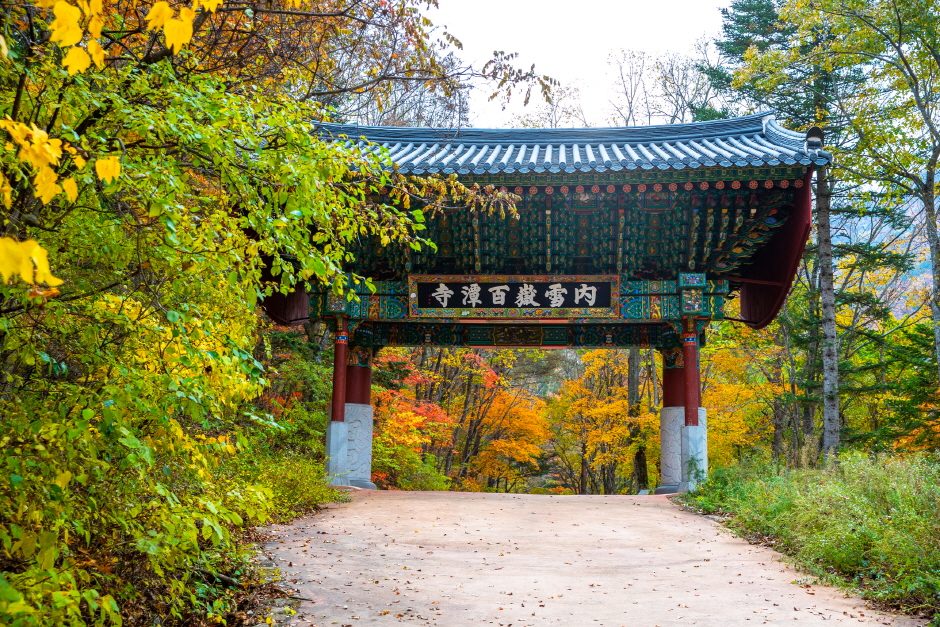

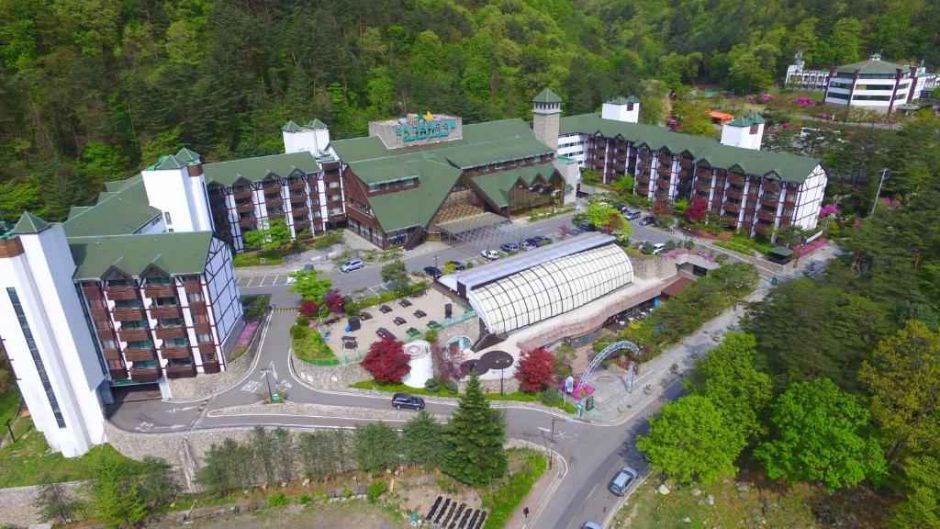
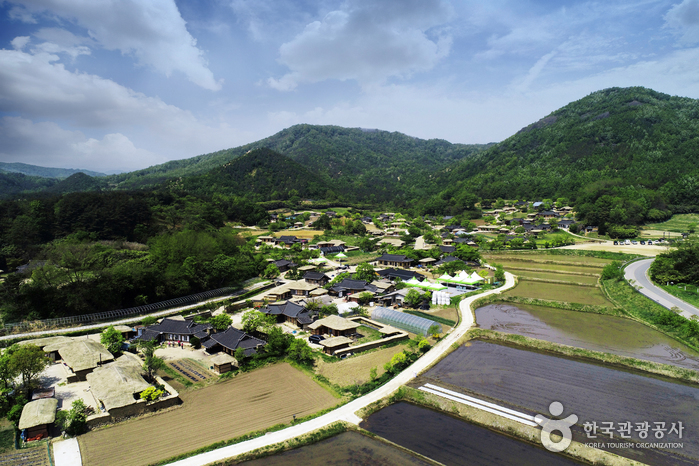
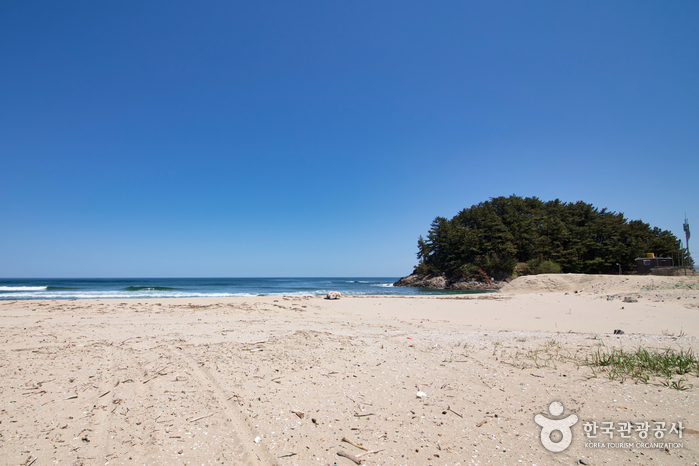
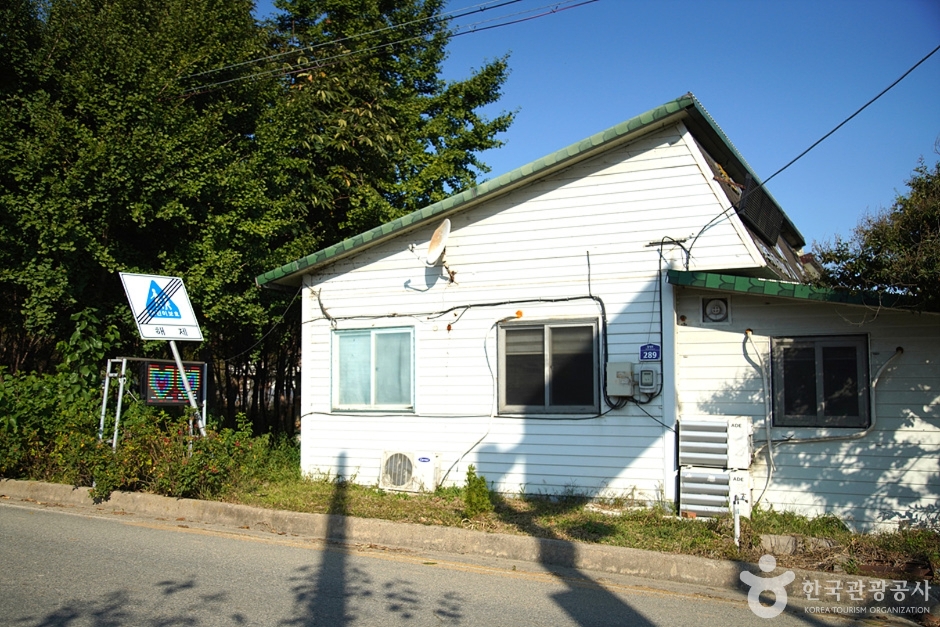
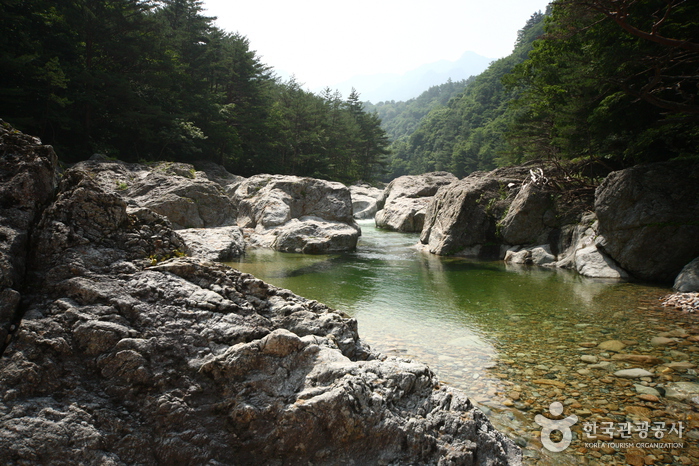
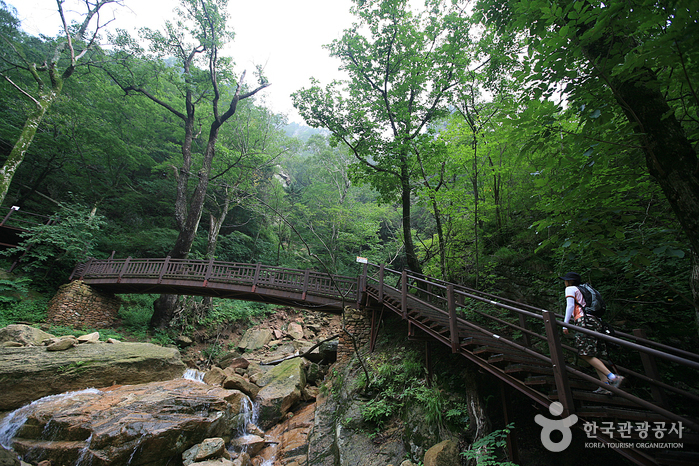
 English
English
 한국어
한국어 日本語
日本語 中文(简体)
中文(简体) Deutsch
Deutsch Français
Français Español
Español Русский
Русский